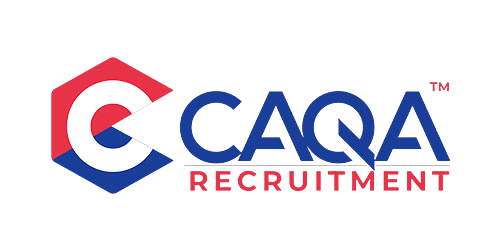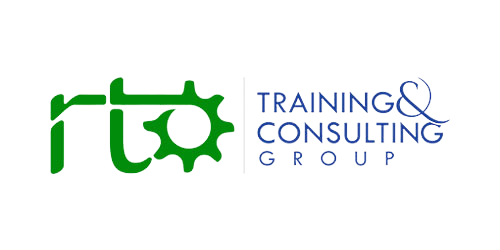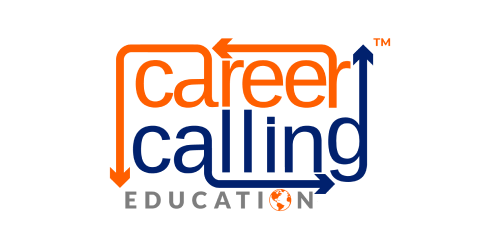The skills crunch meets the attention economy.
Australia’s labour market has a paradox hiding in plain sight. Nearly two million Australians already work in the trades, yet New South Wales—and the nation more broadly—continues to face acute shortages across construction, manufacturing, and allied vocational fields. At the same time, the next generation of potential apprentices lives on their phones, curating identity and community on short-form video platforms that compress advice, inspiration, comedy, and career discovery into the space of a thumb-swipe. In 2025, TAFE NSW moved decisively to meet that reality on its own terms, partnering with TikTok creators to turn passive viewing into practical pathways. The message is simple and subversive: your feed can be a funnel—straight into a trade that pays, matters, and welcomes you.
Moving the needle on representation
The stakes are not just numerical; they’re cultural. Women remain underrepresented in many trades, despite strong demand and rising visibility of female apprentices and leaders. That underrepresentation is a pipeline problem and a perception problem. TAFE NSW’s collaboration with creators such as Yana Marks—known to hundreds of thousands as @sydneyplumberchick—confronts both. Her content, viewed over 13 million times, reframes plumbing as purposeful, skilled work that solves real-world problems and delivers autonomy and pride. It also shows a woman in high-vis not as an exception but as an exemplar. By narrating her apprenticeship from age 17 to advocacy, Marks and her peers collapse the psychological distance between a curious viewer and a committed apprentice, especially for girls and young women who have rarely seen themselves in these roles. The outcome is not just visibility; it is viability. When a trade looks like you, it becomes thinkable.
Turning creators into career catalysts
The centrepiece of the strategy—TikTok’s Tools of the Trade workshop—did more than assemble big accounts for a photo-op. It created a conversational marketplace where young people could speak directly with creators who inhabit both the shop floor and the social graph. Barbers like Will Green (@cutsbygreeny), hospitality entrepreneurs like Ali “Chebbo” Chebbani (@chebbo), and creators from floristry to cookery shared how they turned craft into livelihood and community. That human layer matters. Traditional careers fairs can feel transactional or generic; creators bring parasocial trust and narrative continuity. A young person who has followed a barber’s journey for months arrives with context, questions, and a mental model of the pathway. In this setting, TAFE staff act less like gatekeepers and more like guides—translating inspiration into enrolment plans, prerequisites, funding options, and realistic timelines.
Why TikTok, and why now?
The platform’s gravitational pull on youth attention is undeniable. Beyond entertainment, hashtags like #LearnOnTikTok have normalised short, practical learning moments, and trade communities have flourished in categories from construction to barbering. For TAFE, the choice is not about glamorising work; it is about storytelling at scale where attention already lives. In a market where awareness and intent often stall long before application, TikTok compresses discovery, demystification, and first contact into a single surface. It also enables micro-segmentation—creators can speak credibly to girls exploring plumbing, to school-leavers curious about barbering, to career-switchers eyeing hospitality entrepreneurship—with a tone and texture that traditional advertising rarely achieves.
From awareness to action: the conversion challenge
Of course, views are not vacancies filled. The operational question is conversion: how do you move a viewer from a 60-second video to a signed training contract or a TAFE enrolment? TAFE NSW’s approach pairs content with concrete next steps. Workshops integrate hands-on tasters so curiosity can meet capability. QR-coded program guides and on-the-spot counselling shorten the time between “I could do this” and “here’s how I start.” Post-event nurturing—follow-up messages, cohort invites, campus tours, and peer communities—keeps momentum alive. The most effective campaigns treat creators as the top of a funnel aligned to TAFE’s enrolment systems, not as a parallel universe of vague interest. When enrolments uptick after a creator series, that is not the magic of virality; it is the math of a better journey.
What success looks like (and how to measure it)
Success cannot be measured by vanity metrics alone. A credible dashboard blends attention, intention, and outcomes. On the attention side: reach within target demographics, completion rates, saves, shares, and comments that indicate genuine career curiosity. On the intention side: clicks to course pages, event RSVPs, counselling bookings, and pre-apprenticeship registrations trace the bridge from interest to action. On the outcomes side: conversions to enrolment, apprenticeship commencements, diversity shifts in applicant pools, and early retention. The most compelling impact stories triangulate these layers, then disaggregate by cohort—women, regional youth, Indigenous learners—to ensure the strategy is not just broadly effective but specifically equitable.
Mind the ethics: authenticity, safety, and standards.
Recruitment via creators magnifies both opportunity and responsibility. Authenticity is the price of admission; content must reflect the real contours of trade work, including early starts, physical demands, safety protocols, and the discipline of learning on-the-job. Over-promising invites disillusion and attrition. Safeguarding minors requires clear guardrails wherever online community meets offline engagement: parental consent for under-18s, child-safe event design, and moderation policies that protect participants from harassment or exploitation. Brand safety matters too. Selection and vetting of creators should include values alignment, content history checks, and clear codes of conduct. Finally, compliance with regulatory frameworks—from advertising standards to informed consent in data capture—anchors innovation in integrity.
Inclusion is a strategy, not a slogan.
If the aim is to expand who sees themselves in a trade, representation must be systematic, not incidental. That means commissioning creators across gender, culture, language, disability, and region, and funding them to tell stories that reduce friction for their communities: the cost of tools and PPE, how to navigate transport to campus, managing work–study balance, or finding inclusive workplaces. Pair creator content with TAFE-led supports—LLN assistance, foundation programs, scholarships, mentoring—so that aspiration has scaffolding. In regional and remote areas, hybrid events and travelling pop-ups can translate a Sydney-centred campaign into local pipelines. Inclusion also extends to employers: showcasing host businesses that invest in diverse apprenticeships helps nudge industry norms while giving new entrants a safer landing.
Lessons for other TAFEs and RTOs
The NSW model is adaptable, but copy-paste won’t cut it. The creators you choose shape the students you will meet. Start with your local skills plan and priority cohorts, then curate a creator roster that maps cleanly to those needs. Build a simple but rigorous engagement framework: clear briefs, key messages, disclosure requirements, and a shared commitment to truth-telling about the day-to-day realities of training. Align your content calendar to the academic year and intake windows so interest peaks when action is possible. Integrate SMS/LMS platforms and application portals so that every call-to-action is a click away. And treat creators as partners, not just media channels—invite them to campus, into classrooms, and into feedback loops about what students are asking and fearing.
The role of government and policy
Ministers have rightly framed this as more than marketing. When Steve Whan endorses TikTok as an “online toolkit for turning passion into profession,” he is pointing to a policy truth: labour market challenges are now also communication challenges. The state’s role is to hold the frame—setting targets for completions, for women in trades, for regional equity, while enabling institutions to experiment with channels that work. That means recognition that recruitment is a capability to be funded, measured, and iterated, not a side hustle for already-stretched teams. It also means harmonising efforts so that TAFE campaigns, school career guidance, and industry incentives converge rather than compete for attention.
Risks, realities, and resilience
There are real risks to manage. Algorithm volatility can crater overnight; diversify channels and build owned communities so your message is not held hostage to a For You page. Creator crises happen; have a bench, a code of conduct, and a rapid response plan. Economic cycles fluctuate; maintain a portfolio of trade stories so campaigns can pivot toward sectors with resilient demand. And beware the over-index on “star power.” The most durable recruitment effects often come from mid-tier creators and micro-influencers whose audiences are tight-knit and highly engaged. In every case, resilience is designed, not wished for.
From inspiration to infrastructure
What distinguishes a splashy activation from a sustainable strategy is the boring, beautiful scaffolding behind the scenes. Event run-sheets that choreograph creator talks with hands-on tasters. Data capture that respects privacy but enables follow-up. Trained counsellors ready to meet a spike in queries. Campus teams briefed on campaign promises so the first day on site aligns with what was seen online. Employer partners queued to host new apprentices. When these pieces interlock, a one-day workshop becomes a year-round pipeline, and the phrase “from scroll to skill” stops being a tagline and starts being a system.
The culture shift we need
At heart, this is a cultural project. It tells a different story about trades—not as a fallback for the less academic, but as a frontier for makers, problem-solvers, and entrepreneurs. It validates the platforms young people use to form identity and learn. And it invites women and other underrepresented groups to see their futures in industries that need them. If NSW is currently leading on scale and coordination, it is because it has taken seriously the idea that talent discovery now happens in public, in comments sections, and in stitched videos that make a trade feel both possible and personal. The payoff is practical: more enquiries, more commencements, more completions. But the deeper dividend is reputational: a modern TAFE that meets students where they are and helps them build where they want to go.
The bottom line
TAFE NSW’s embrace of TikTok creators is not a gimmick; it is an evidence-informed response to a demographic and cultural reality. It harnesses authentic voices to widen the aperture of who sees themselves in a trade, particularly women. It turns entertainment into exploration, exploration into engagement, and engagement into enrolment—provided the pathway is well lit and well supported. As other TAFEs and RTOs scale their own creator partnerships, the north star is clear: recruit with honesty, support with substance, measure what matters, and keep the human stories at the centre. When that happens, a video isn’t just a view. It’s the first step toward a vocation.


































